Integrating Nature and Pest Control for Effective Solutions
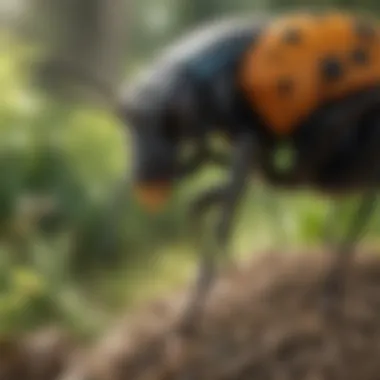
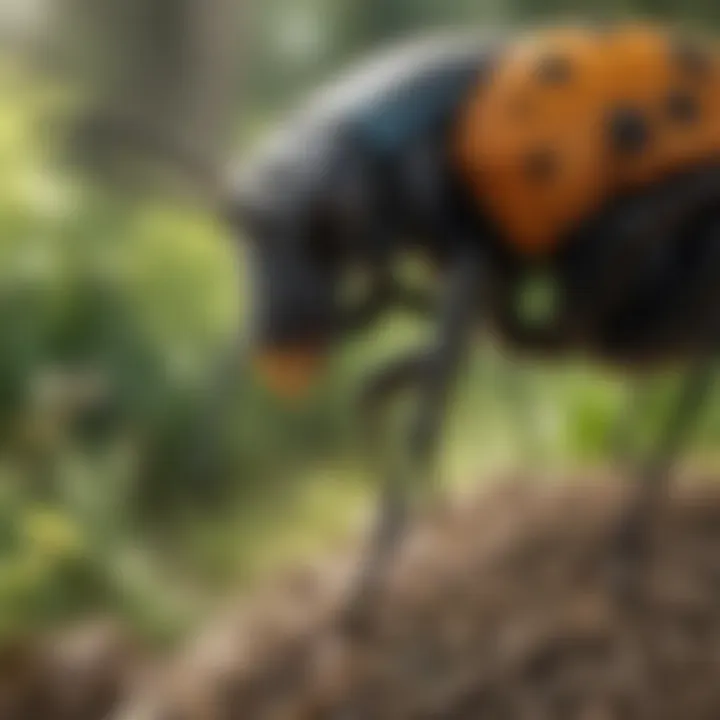
Intro
In the ongoing quest for a balanced and sustainable living environment, pest management has emerged as a crucial aspect for homeowners. This article delves into the significance of integrating natural ecosystems with pest control, particularly focused on termites. The importance of identifying pests is paramount as an initial step toward establishing effective management strategies. By understanding the natural behaviors of pests and utilizing eco-friendly methods, homeowners can craft a holistic approach to pest control that is not only effective but also environmentally responsible.
Pest Identification
To tackle infestations effectively, it is essential to identify the pests at hand. Pests vary widely in their characteristics and behaviors, making accurate identification crucial to selecting the right control measures.
Detailed Descriptions of Common Pests
Termites are one of the most notorious pests, known for their ability to cause significant structural damage. These insects are often categorized into several types, including drywood termites, subterranean termites, and dampwood termites. Each type exhibits distinct nesting habits and damage patterns. Understanding these differences helps homeowners know what they are dealing with.
Other common pests include ants, cockroaches, and rodents. Ants, particularly carpenter ants, can cause similar destruction as termites. Cockroaches are not just unsightly; they also pose health risks. Rodents, such as mice and rats, can contaminate food and carry diseases. Recognizing these pests early can prevent them from becoming a larger issue.
Signs and Symptoms of Infestations
Identifying an infestation often relies on recognizing specific signs.
- Termites: Look for mud tubes, swarming events, and hollow-sounding wood.
- Ants: Trails of ants leading to food sources or nesting areas.
- Cockroaches: Droppings, shed skins, and a strong musty odor.
- Rodents: Gnaw marks, droppings, and tracks.
Each pest type has unique indicators, and knowing these can enable prompt action to prevent further damage and reduce the risk of infestations spreading.
Prevention Strategies
Prevention is the first line of defense against pests. Simple home maintenance practices play a significant role in keeping infestations at bay.
Home Maintenance Tips for Pest Prevention
- Seal cracks and crevices: Examine your home for openings that pests can use as entry points. Caulk and seal potential access areas.
- Maintain cleanliness: Regular cleaning reduces food sources for pests. Pay attention to kitchens and dining areas.
- Store food properly: Use airtight containers for food storage, and avoid leaving dishes in the sink overnight.
- Manage moisture: Address any leaks or damp areas in the home that could attract pests, particularly termites.
Natural Deterrents and Barriers
Employing natural remedies can further enhance pest prevention efforts. Some effective options include:
- Diatomaceous earth: This natural powder can deter ants and other crawling insects.
- Essential oils: Oils like peppermint and tea tree can serve as natural repellents. Spraying diluted solutions around entry points can keep pests at bay.
- Beneficial insects: Introducing ladybugs or predatory nematodes can help control unwanted insect populations while promoting a healthy ecosystem.
Treatment Options
When prevention methods fail, it is essential to have Treatment options ready to address any infestations effectively.
Overview of Chemical vs. Natural Treatments
Chemical treatments often promise quick results but may carry risks to humans and pets. On the other hand, natural treatments are more environmentally friendly but may take longer to show results. Homeowners should carefully evaluate their options before acting.
Step-by-Step Guides for DIY Treatments
- For Termites:
- For Ants:
- Identify the type of termite.
- Create barriers using diatomaceous earth around infested areas.
- Use nematodes to target larvae.
- Create a mixture of borax and sugar as bait.
- Place the bait near ant trails.
- Seal off entry points to prevent re-infestation.
By integrating natural pest control methods, homeowners can achieve effective pest management while maintaining the health of their environment.
Integrating nature into pest management reflects a shift toward ecological responsibility. Embracing these methods can significantly contribute to global sustainability, and by doing so, homeowners not only protect their residence but also support a larger environmental balance.
Understanding Pest Control in Context
Pest control is an essential component of managing household pests, ensuring not only the health of the living space but also the wellbeing of its inhabitants. This section discusses the intricate relationship between pests and the environments they invade, emphasizing how a contextual understanding of pest control can enhance overall effectiveness.
Defining Pest Control
Pest control refers to the strategies and practices employed to minimize or eliminate pests that threaten crops, livestock, or human health. Pests can take various forms, including insects, weeds, rodents, and fungi, and can have detrimental effects on food security and human habitation. Effective pest control seeks to understand the behavior of pests and the ecosystems they inhabit. This multi-faceted approach goes beyond mere eradication; it takes into account the ecological balance and the potential impacts of control methods on non-target organisms.
The Ecological Impact of Pests
Pests play a significant role in ecosystems as both consumers and competitors. Their impact is not universally negative; they can contribute to soil health, serve as food for beneficial organisms, and even help in pollination. However, excessive pest populations can lead to agricultural losses and health risks. Evaluating their ecological role is crucial. Understanding how pests interact with their environment can guide methods used in control strategies, preserving beneficial species while targeting harmful ones. For example, the overuse of chemical pesticides can disrupt these ecological interactions, leading to a loss of natural controls and even an increase in pest populations over time.


The Importance of Balance in Ecosystems
Ecosystems thrive on a delicate balance. Each species, including pests, has a role that maintains this equilibrium. When considering pest control, it is vital to prioritize methods that not only reduce pest numbers but also uphold this balance. Integrated approaches that incorporate both natural and chemical methods can offer effective solutions. For instance, introducing natural predators—such as ladybugs for aphid control—can reduce reliance on synthetic pesticides.
Furthermore, educating homeowners about the ecological implications of their pest control choices can foster more sustainable behaviors. This encourages the protection of beneficial insects and other natural pest management strategies.
"Understanding the context of pest control is not just about managing threats but about cultivating an environment where all species can coexist; this is the essence of a healthy ecosystem."
Natural Approaches to Pest Control
Natural approaches to pest control emphasize using ecological methods to manage pests. This technique promotes a balance within ecosystems while minimizing chemical use that can harm the environment. By relying on natural processes, homeowners can create sustainable pest management systems that are both effective and responsible. This section will explore these methods in depth.
Definition and Benefits of Natural Pest Control
Natural pest control refers to using living organisms or natural materials to manage pest populations. This method contrasts with traditional chemical-based pest control, focusing instead on ecological stability. The benefits of natural pest control are numerous:
- Safety for Humans and Pets: Natural methods generally pose fewer risks to human health and the well-being of pets.
- Environmental Protection: These methods protect the environment by reducing chemicals that can leach into soil and waterways.
- Sustainability: Natural pest control incorporates sustainable practices that can maintain pest populations without harmful ecological impacts.
Implementing natural pest control often leads to healthier gardens and homes, creating a sense of stewardship towards the environment.
Understanding Biological Control
Biological control is a crucial aspect of natural pest management. It involves using natural predators, parasites, or pathogens to control pest populations. This method requires understanding the interactions between pests and their enemies.
Some common biological control methods include:
- Introducing Insect Predators: Ladybugs, lacewings, and predatory mites can reduce pest populations significantly.
- Parasitic Wasps: These wasps target specific pest species and lay their eggs inside them, effectively controlling their numbers.
- Microbial Control Agents: Certain bacteria or fungi can infect and kill specific pests without harming beneficial species.
Effective biological control relies on selecting the right organisms and understanding their life cycles.
Examples of Natural Pesticides
Natural pesticides are derived from plant or mineral sources, making them less harmful to the environment than synthetic alternatives. These pesticides can be both effective and sustainable. Examples include:
- Neem Oil: Extracted from the seeds of the neem tree, it disrupts the life cycle of pests and deters many insects.
- Diatomaceous Earth: This powdery substance, made from fossilized algae, effectively kills pests by damaging their exoskeletons.
- Pyrethrin: Derived from chrysanthemum flowers, it is highly effective against a wide range of insects but biodegradable after application.
"Implementing natural pesticides can reduce chemical exposure while providing effective pest management solutions."
Discovering and applying these natural products helps create a more balanced ecosystem in gardens and homes.
The Role of Beneficial Insects
Beneficial insects are crucial players in the realm of pest control. Their presence can lead to a significant reduction in pest populations, leading to healthier plants and a more balanced ecosystem. This section will explore how beneficial insects contribute to pest management, the identification of these insects, and strategies for promoting their populations in home gardens. Understanding their role helps homeowners adopt ecologically sound pest control practices that yield effective results.
Identifying Beneficial Insects
Recognizing beneficial insects is the first step in leveraging their power for pest control. Common beneficial insects include:
- Ladybugs: These insects feed on aphids, which are harmful to plants.
- Lacewings: Known for their larvae that consume aphids, mealybugs, and mites.
- Parasitic Wasps: They lay eggs in pest insects, which helps manage their populations.
- Predatory Beetles: These insects will target caterpillars and other pests.
Homeowners can identify these beneficial insects by their appearance and behavior. Researching local species is essential for understanding which insects are common in your area. Identification guides and apps can assist in learning more about beneficial species.
Encouraging Beneficial Insects in the Garden
Creating an environment that attracts beneficial insects is fundamental. Consider these methods to support their presence:
- Diverse Plantings: Use a variety of plants that bloom at different times to provide food sources throughout the season.
- Flowering Herbs: Plants like dill, fennel, and cilantro can attract beneficial insects, as they provide nectar and pollen.
- Avoid Pesticides: Chemical pesticides can harm beneficial insects. If pest control is needed, consider organic or targeted applications to minimize impact.
- Provide Shelter: Create habitats with native plants, or leave areas of your garden untended to encourage beneficial species.
These strategies can help foster an ecosystem that supports the needs of beneficial insects.
The Synergy Between Beneficial and Harmful Species
Understanding the dynamics between beneficial and harmful insects is essential for a balanced ecosystem. Beneficial insects help keep pest populations in check, while some harmful species can also play a role in maintaining ecological balance. For instance:
- Predation: Beneficial insects can prey on harmful pests, reducing their numbers.
- Competition: When beneficial insects thrive, they can outcompete harmful species for resources.
The coexistence of beneficial and harmful species can lead to a natural form of pest control. This synergy minimizes the need for chemical interventions.
Integrating Natural and Chemical Solutions
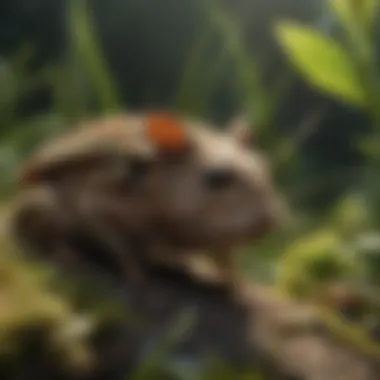

Integrating natural and chemical solutions in pest control is a critical component of effective management strategies. This approach allows for the balance of ecological integrity and pest management efficacy. By relying solely on chemicals, many unintended consequences may arise, such as the development of resistant pest populations or harm to beneficial organisms in the ecosystem. The aim is to achieve a hybrid method, embracing both natural methods and targeted chemical applications when necessary.
Utilizing both solutions can provide substantial benefits. For example, natural pest control methods such as introducing beneficial insects can reduce pest populations. In instances where pest outbreaks occur, chemical solutions can be employed judiciously to address the issue quickly without undermining longer-term ecological solutions.
Evaluating Chemical Solutions
When evaluating chemical solutions, several factors should be considered. First, it is essential to assess the active ingredients and their potential impacts on the environment. Some chemicals may remain in the soil long after application, harming non-target species. Additionally, the targeted pest should be clearly identified, ensuring that the chosen chemical specifically addresses it without causing collateral damage to other insects.
Another point of evaluation is the application method. Granular treatments may have slower action but greater persistence compared to liquid formulations, which act quickly but may require reapplication. Effectiveness, safety, and environmental impact are pivotal in deciding on a chemical solution. Proper use minimizes the risk of harm to beneficial wildlife and the surrounding ecosystem.
When to Use Natural versus Chemical Solutions
The decision to use natural or chemical solutions hinges on the specific pest situation. Natural solutions can be highly effective for minor infestations or as a preventive measure. For instance, planting pest-repelling plants or using beneficial insects can address issues at an early stage. However, when faced with a severe infestation that threatens property or health, chemical solutions may provide faster relief.
Consider the lifecycle of the pest. Chemicals can be effective for rapid control during specific lifecycle phases. Meanwhile, natural methods, such as introducing predatory insects or maintaining habitat for beneficial species, can support long-term management goals. Choosing the right moment for each approach can lead to a more integrated pest management experience.
Creating a Comprehensive Pest Management Plan
Developing a comprehensive pest management plan involves thorough planning and execution. Start by assessing your property for potential pest attractants, including standing water or overcrowded vegetation. By reducing these risks, the likelihood of pest problems diminishes.
Incorporate both preventive measures and active control tactics into your plan. Regular monitoring of pest population levels can provide insights on which strategies to employ. Document your findings and adjust your approach accordingly. This data-driven method offers clarity and ensures resources are allocated effectively.
Ultimately, collaboration between both natural and chemical approaches allows for adaptability and effectiveness. Align your pest management strategies with the unique needs of your environment, considering the benefits and drawbacks of each method. With time and diligence, effective pest management can be achieved without sacrificing ecological balance.
"Integrating different pest management strategies leads to a more resilient and effective control system that benefits both the homeowner and the ecosystem."
Utilizing these guidelines can help homeowners create a tailored pest management plan that emphasizes sustainable practices while addressing pest issues efficiently.
Case Study: Termite Management
Termite management is an essential element of pest control, especially for homeowners. This section analyzes the complex behavior of termites, their natural enemies, and how these elements contribute to sustainable pest management strategies. Understanding termites and their ecological roles can lead to more effective control measures that align with natural approaches. Moreover, learning from this case study provides insights into how integrating nature can enhance control methods while reducing reliance on synthetic chemicals.
Overview of Termite Species
Termites belong to the order Isoptera and are often classified into three primary groups: dampwood, drywood, and subterranean termites. Each species exhibits unique behaviors and preferences, influencing their management. For example, dampwood termites thrive in moist environments, making them more prevalent in areas with high humidity. Drywood termites, on the other hand, infest dry wood, leading to potential damage in structures. Subterranean termites remain underground, tunneling through soil to reach wood sources above. Understanding these distinctions aids homeowners in identifying the exact termite species affecting their property. This precision is critical for implementing tailored control strategies.
Natural Predators of Termites
The ecosystem offers natural predators that can help regulate termite populations. Key predators include:
- Nematodes: Microscopic worms that infect termites, leading to their death.
- Ants: Certain ant species attack and prey on termites.
- Birds and reptiles: Some birds, like woodpeckers, and reptiles consume termites when they spot them.
Encouraging these natural enemies can diminish termite numbers organically. Homeowners might create habitats for these predators by cultivating diverse plant life that attracts beneficial insects and animals. By fostering a balanced ecosystem, the need for chemical treatments can often be minimized.
Effective Methods of Natural Termite Control
Implementing effective natural termite control entails several strategies:
- Moisture Control: Keeping the home dry by fixing leaks and improving drainage limits conditions conducive to termite infestation.
- Physical Barriers: Installing physical barriers made from steel mesh or sand can obstruct termite movement.
- Boric Acid: A natural pesticide that disrupts termite digestive systems; it can be applied in infested areas, but caution is necessary to keep it out of reach from pets and children.
Integrating these methods into a comprehensive management plan not only addresses existing infestations but also establishes long-term preventative measures. Natural termite control promotes a healthier living environment while preserving ecological balance.
"Employing natural methods for termite control may require patience, but the long-term benefits far outweigh the initial efforts."
Well-informed strategies enable homeowners to manage termite issues effectively, conserving energy and resources while reducing ecological impacts. By understanding the fundamental aspects of termite behavior and their natural regulation methods, we can encourage healthier living spaces in alignment with sustainable practices.
Challenges in Natural Pest Control
Understanding the challenges in natural pest control is crucial for developing a comprehensive approach to managing pests effectively while preserving ecological integrity. Natural pest control methods aim to work in harmony with the environment, but they come with their limitations and risks that need consideration. Homeowners, gardeners, and pest control experts must navigate these challenges to implement effective solutions while securing a healthy living space.
Limitations of Natural Methods
Natural pest control methods, though beneficial, have their limitations. One significant challenge is the effectiveness of natural pesticides when compared to synthetic options. For instance, essential oils may repel certain insects, but they often do not work as quickly or effectively as stronger chemical pesticides. Furthermore, natural methods may require frequent applications to maintain their efficacy, leading to more labor-intensive pest management practices.
Additionally, some natural methods may not target specific pest species efficiently. This inefficiency can create gaps in pest management, allowing populations to rebound. Homeowners must remain vigilant and monitor regularly to ensure effective control, which can be time-consuming and can cause frustration.
Another important aspect is the consistency of natural methods. Environmental factors, such as weather patterns or soil health, can influence pest control outcomes. This inconsistency can lead to unpredictability, especially when immediate pest removal is required. Thus, understanding the local ecosystem is essential to effectively apply natural control strategies.
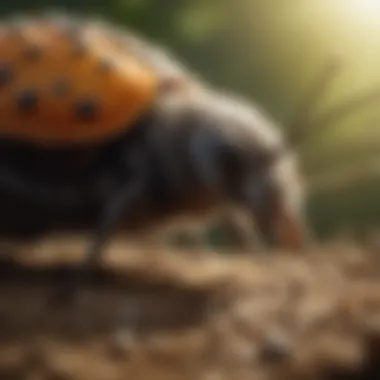
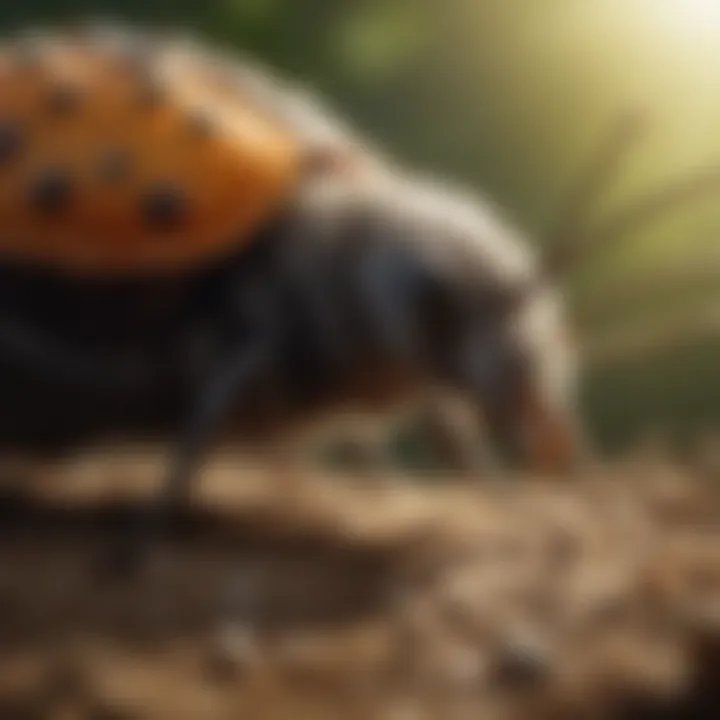
Potential Risks of Biological Control
While biological control—using living organisms to manage pests—holds great promise, it does carry potential risks. Introducing beneficial insects or organisms may inadvertently disrupt local ecosystems. For example, releasing ladybugs to control aphids can also result in competition for resources among existing insect populations.
Moreover, the unchecked growth of introduced species can negatively impact the native biodiversity of an area. If a biological control agent outcompetes native species, it may cause a decline in local fauna. Therefore, careful research and consideration of the ecological balance are necessary before implementing biological control methods.
There is also the risk that biological control measures may not be effective against severe infestations. In situations where pests thrive, relying solely on biological methods may lead to inadequate control, thereby causing crop damage or property destruction.
Public Perception and Acceptance
Public perception plays an important role in the adoption of natural pest control methods. Many homeowners are accustomed to traditional chemical pesticides due to their immediate results. There can be a strong reluctance to switch to more sustainable options, even in light of emerging research advocating for their benefits.
The skepticism surrounding natural methods often stems from misinformed beliefs about their effectiveness. This can hinder broader acceptance of biological control methods or natural pesticides. Education and awareness campaigns are crucial in bridging this gap. By providing insights into the science behind these methods and demonstrating their success stories, we can encourage more homeowners to embrace eco-friendly pest management.
"Natural pest control methods often require more research and understanding of ecosystems, which might be challenging but rewarding in the long run."
Efforts must be directed toward reassuring the public of the long-term benefits of such approaches. As consumer demand for sustainable practices grows, markets may shift, leading to greater acceptance of natural and integrated pest management methods.
Overall, addressing the challenges in natural pest control is essential for promoting a balanced approach to pest management—one that respects both human needs and the environment.
Future Trends in Pest Control
The landscape of pest control is evolving, influenced by several factors such as technological advancements, changing consumer preferences, and the growing importance of sustainability. Understanding these trends is essential for homeowners and pest control professionals as they navigate the complexities of maintaining pest-free environments in effective and environmentally responsible ways. By analyzing emerging trends, one can enhance pest management practices while aligning with ecological principles.
Advancements in Research and Technology
Technological innovation plays a pivotal role in the future of pest control. Today, researchers are focused on developing precision pest management techniques. These include the use of drones for surveillance, promises in genetic engineering, and the advancement of automated pest detection systems. Analytics, artificial intelligence, and machine learning are increasingly employed to predict pest populations and behaviors, allowing for targeted interventions rather than widespread chemical applications.
In addition, the development of smart traps and sensors provides real-time data about pest activity. This information empowers homeowners to make informed decisions with minimal environmental impact. Innovations such as these are setting the stage for a new era in pest management where efficiency and ecological responsibility go hand in hand.
The Role of Sustainability in Pest Management
Sustainability is at the core of modern pest management approaches. More homeowners are recognizing the importance of integrating sustainable practices into their pest control efforts. This trend reflects a broader societal shift towards eco-friendliness and resource conservation. Sustainable pest control strategies prioritize methods that do not harm beneficial organisms or degrade the environment.
Practices like habitat manipulation, which involves altering the environment to make it less conducive to pests, are gaining traction. For example, using native plants in gardens can attract beneficial insects while naturally deterring pests. Moreover, sustainable pest management emphasizes the judicious use of chemical controls, advocating for targeted applications over blanket sprays. This balance not only protects the ecosystem but also can lead to healthier living conditions in urban and rural settings alike.
Consumer Demand for Eco-Friendly Solutions
With the growing awareness of environmental issues, there is an increasing demand for eco-friendly pest control solutions. Homeowners are looking for products and methods that minimize toxicity while effectively managing pest populations. There is a noticeable trend towards organic pest control options, including essential oils and plant-based pesticides.
Moreover, many consumers are seeking out companies that prioritize sustainability and transparency in their pest management practices. This trend has led to a rise in certifications and labeling programs that help distinguish eco-friendly products in the market. As a result, businesses that innovate and adapt to meet this demand are likely to thrive.
"Transitioning to sustainable pest control is not just an option; it is becoming an imperative for future generations."
Overall, the integration of sustainable practices, technological advancements, and consumer preferences is shaping the future of pest control. For homeowners, understanding these trends is crucial not only for making informed decisions but also for contributing to a healthier planet.
The End and Recommendations
The importance of the conclusion and recommendations in this article lies in providing a clear synthesis of the findings regarding the integration of nature in pest control. This final section is key for reinforcing the main arguments made throughout the article. It highlights the benefits of a balanced approach that borrows from both natural and conventional methods. By emphasizing strategies that can be employed by homeowners, we facilitate a more informed and effective pest management approach, fostering better environmental health.
Summary of Findings
This article has explored the intersection of natural ecosystems and pest control with an emphasis on termites. Key findings include:
- The Efficacy of Natural Methods: Natural pest controls, when understood and applied effectively, can significantly reduce pest populations.
- Role of Beneficial Insects: These insects not only suppress harmful pests but also contribute to the overall health of the garden.
- Integration Is Essential: Combining natural methods with chemical options allows for a more flexible pest management strategy.
The understanding we gain from these findings is crucial for any homeowner aiming to reduce pests in an eco-friendly manner.
Practical Advice for Homeowners
Homeowners can take practical steps to integrate nature into their pest control strategies:
- Identify Your Pests: Knowing which pests are present is essential for choosing the appropriate prevention or control method.
- Encourage Beneficial Wildlife: Plant native species that attract beneficial insects like ladybugs and lacewings.
- Use Natural Pesticides: Products derived from natural sources can be less harmful than synthetic alternatives and should be considered.
- Regular Monitoring: Keep a close eye on garden health to catch pest problems early before they escalate.
These methods will not only help manage pests but will foster biodiversity within the garden.
Encouraging Collaboration between Natural and Conventional Methods
To achieve optimal pest management, a collaboration between natural and conventional methods is necessary. Here are some recommendations:
- Educate Pest Control Professionals: Encourage training that incorporates natural approaches. This bridges the gap between traditional and modern practices.
- Create Awareness among Homeowners: Share information through community workshops focusing on the benefits of natural pest control methods.
- Advocate Research: Support research that focuses on integrated pest management systems, which combine the best of both worlds.
Effective pest management requires collaboration among all stakeholders, including homeowners, pest control professionals, and researchers.
By embracing a comprehensive approach, homeowners will not only protect their homes from pests but also contribute positively to the environment.



